Teaching children the importance of sustainability while they learn the fundamentals about Science, Technology, Engineering, and Math (STEM) is a great way to combine recycling and upcycling with fun interactive lessons. What better way to teach kids important concepts than with STEM projects using recycled materials?
One way to recycle items such as plastic bottles, cardboard tubes, cans, etc. is to use them as materials for kids activities and STEM challenges. STEM projects using recycled materials will help kids (and adults) create sustainable solutions to complex problems in their future careers that could one day save our planet.
Teachers and parents can equip children receiving a STEM education with the skills needed to develop innovative solutions for fulfilling specific needs. One of the priorities for young people is that these solutions are sustainable and not harmful to the environment. Let’s explore some fun STEM projects using recycled materials.
Easy STEM Projects Using Recycled Materials
STEM education tends to focus on practical application and learning how things work by carrying out tasks in the real world. But if you have future innovators in your classroom or at home, you also want them to use sustainable practices when creating products or solutions requiring STEM-oriented expertise.
So, here are some of our favorite STEM projects that are good for young kids and will teach them to re-use everyday items to create things:
Recycled Plastic Bottle Activities
More than one million plastic bottles are sold every minute worldwide, and only a portion of those are recycled. That’s a lot of plastic on its way to dumps and landfills.
One way to recycle plastic bottles is to use them as whenever you need bottles or containers for kids activities and STEM challenges. Plastic bottles can be used for anything from making a tornado in a bottle to building rockets. Empty water bottles are great for making sensory bottles or a DIY Lava Lamp.
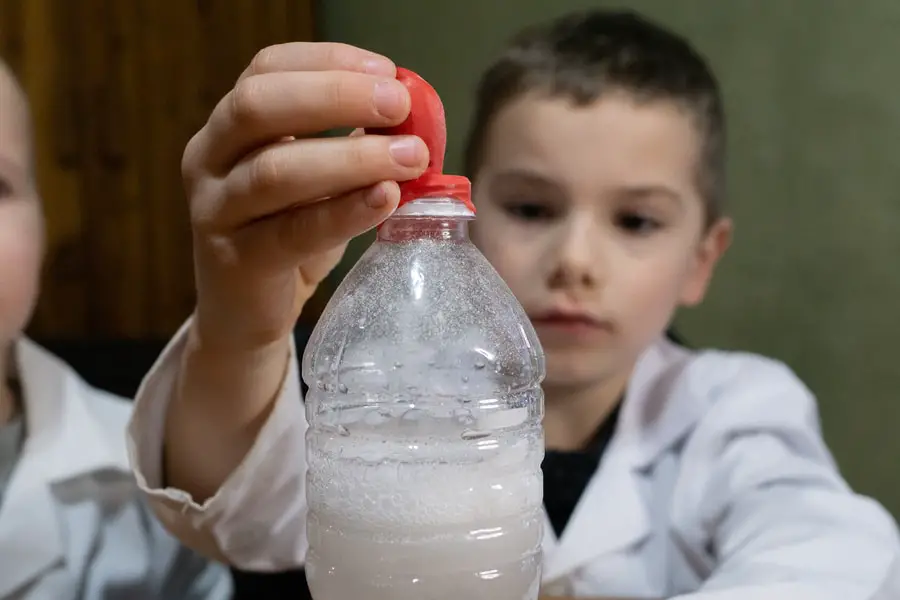
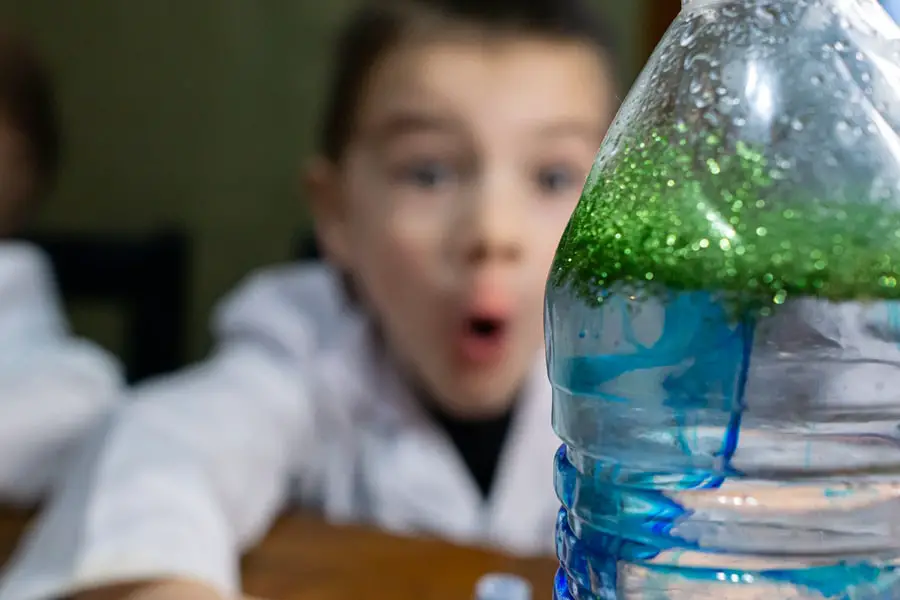
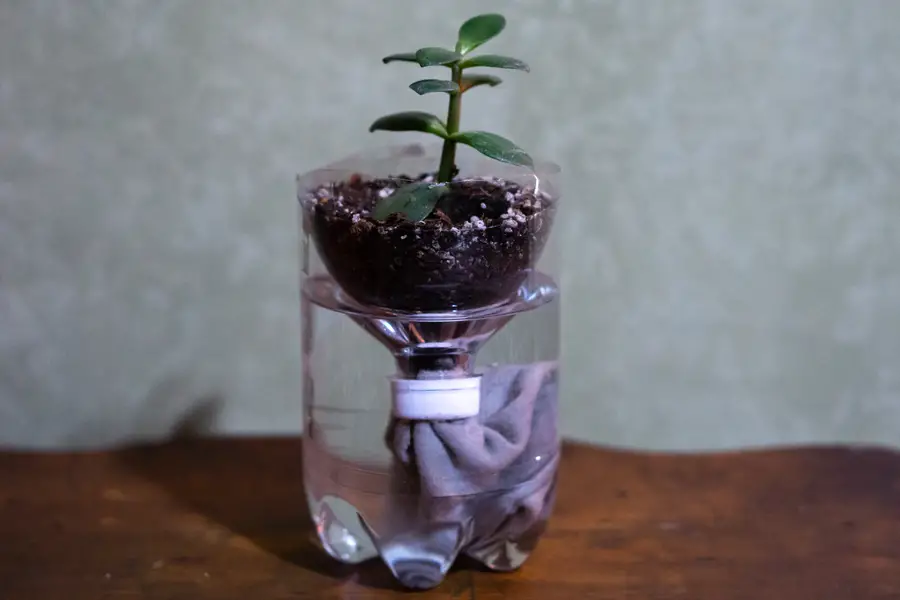
We upcycled a plastic bottle to make a self watering planter. I’ve used a small water bottle and some dry rice (beans or corn can work well too) for an impromptu percussion shaker. Our infant son loved it so much it was his favorite go to toy for months.
You can even launch a plastic bottle rocket! Plastic bottles are versatile and can be used for a variety of science experiments, activities, crafts, and other fun projects. Read more in our post on STEM Projects with Plastic Bottles.
Straw Tower Challenge
The straw tower challenge is incredibly simple in concept (in theory.) It is more challenging than you’d think in practice.
Try using used straws to construct the tallest structure that you can by sticking them together with glue, tape, or any other adhesive. You’ll learn that a lot of thought needs to be put into maintaining tensile strength and the importance of a solid foundation.
Those who rush their projects will ultimately fail.
With recent bans on plastic drinking straws, these may be harder to source for recycling. You can find plastic straws in bulk online should you need them, or use paper straws.
Activities with Recycled Cardboard Tubes
Toilet paper tubes and paper towel rolls are perfect for STEM challenges and activities.
They’re great for building projects (or just building for creative play. Our kids still enjoy gathering up a bunch and constructing “Tube City” only to knock it down. They rebuild it, and think of another creative way to knock it over.)
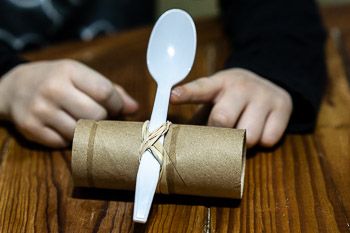
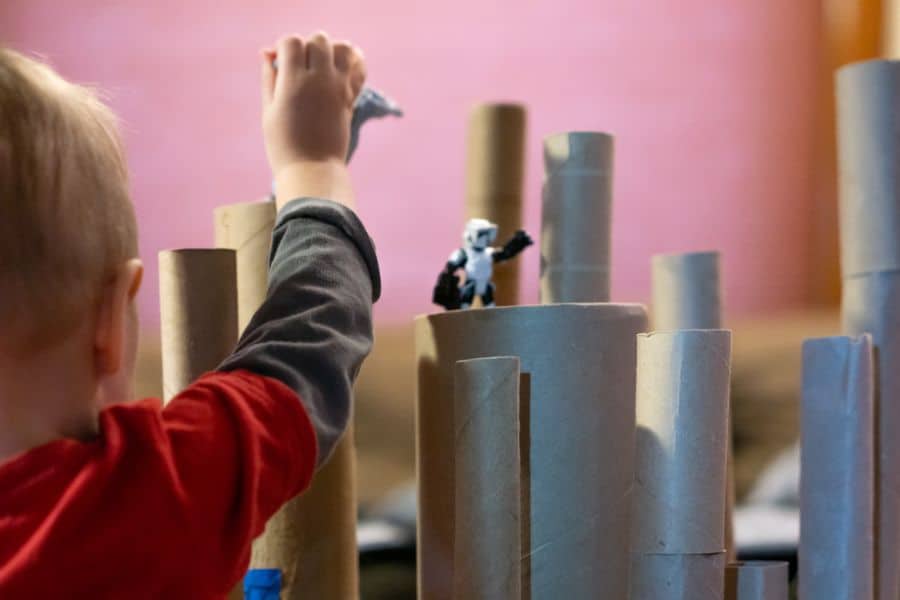
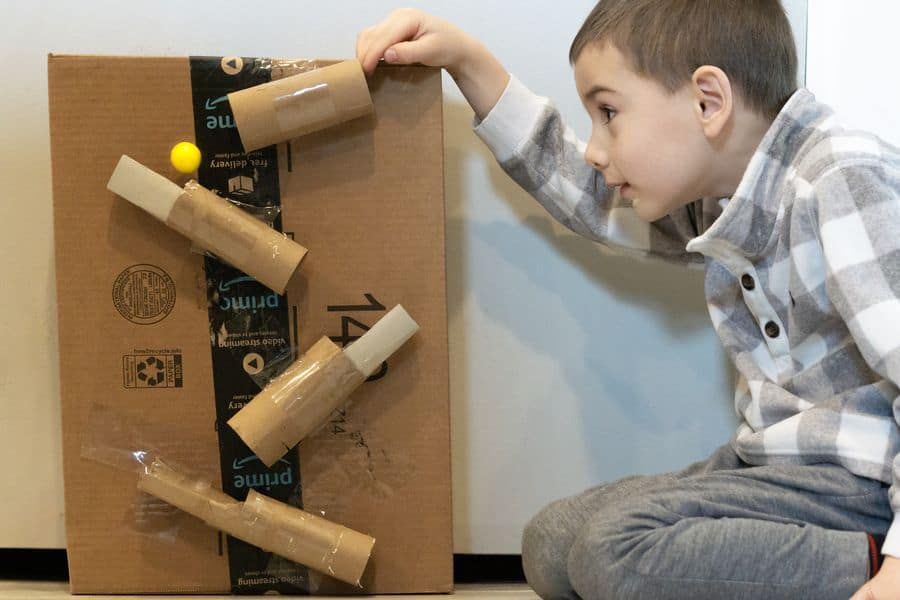
Kids love projects that launch items into the air, and with a cardboard tube, rubber band, and plastic spoon, they can make a catapult. (Yes, they used the cardboard catapult to bring down Tube City.)
You can also build bridges, marble runs, and many more crafts and projects. Check out these and other fun projects in our full post on projects with cardboard tubes.
Pizza Box Solar Oven
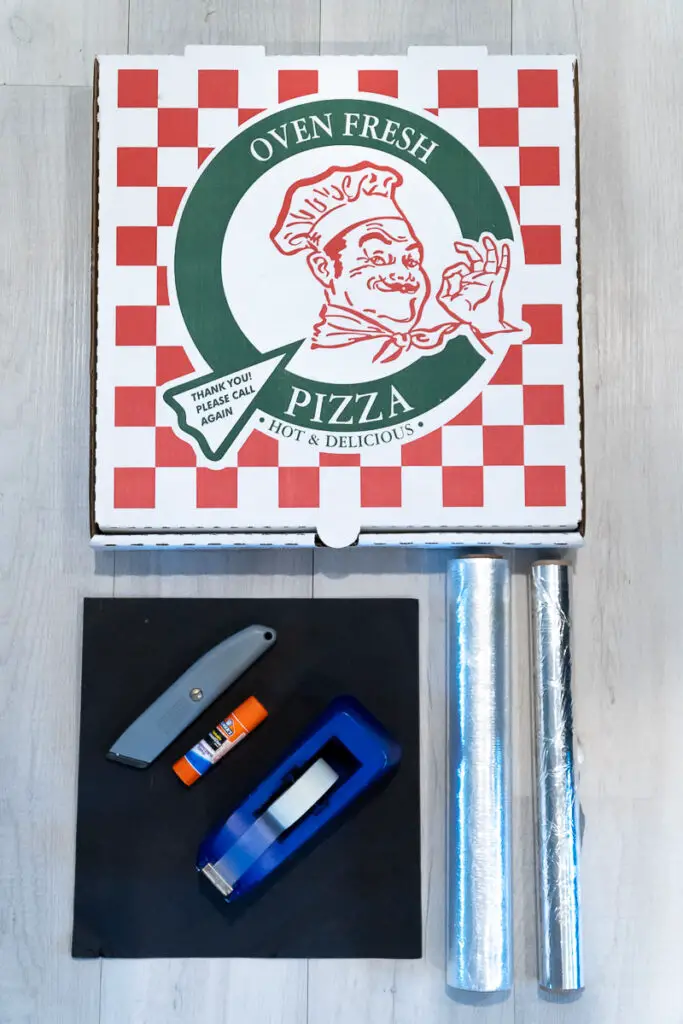
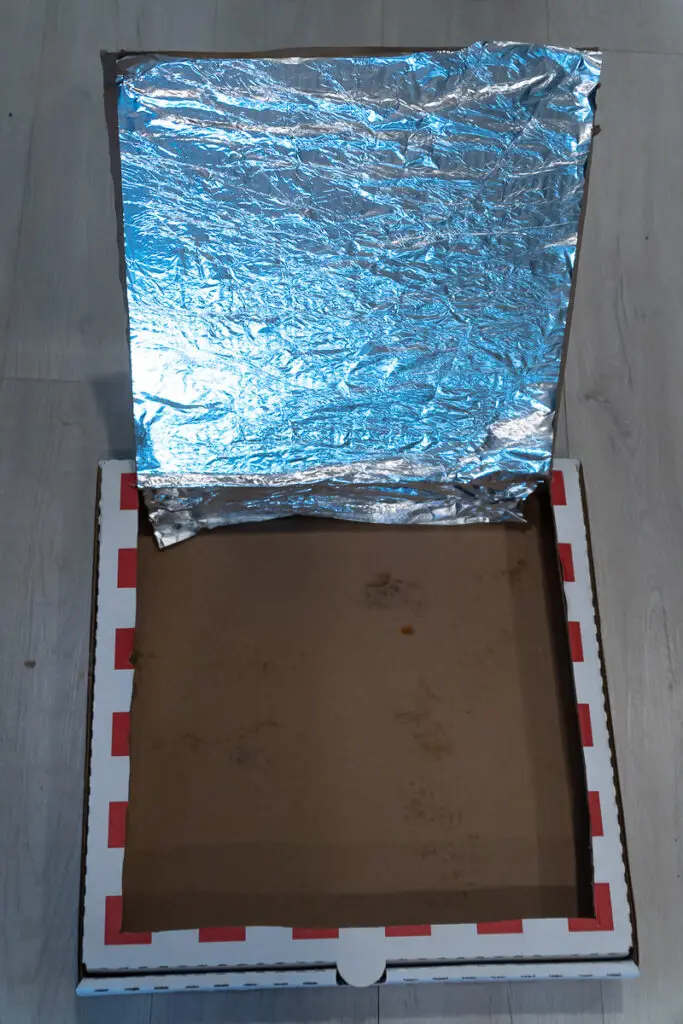
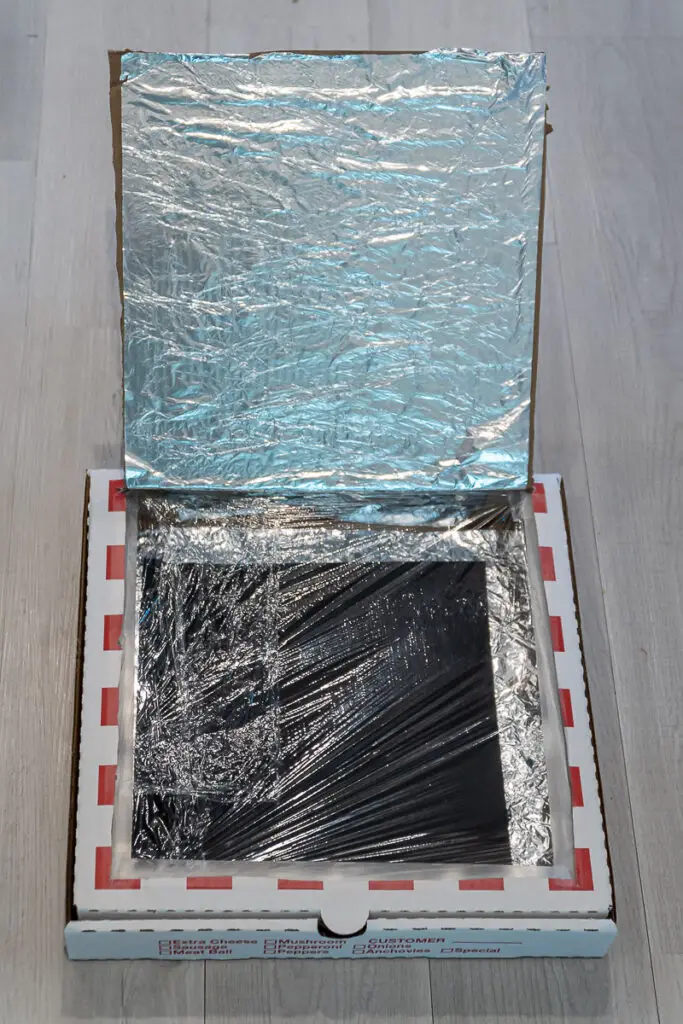
Create a solar oven using a pizza box to make delicious s’mores. This hands-on activity teaches kids about solar energy and heat transfer as they harness the sun’s power to melt chocolate and marshmallows for a tasty treat. Follow along here and make your own solar pizza box oven.
Recycled Cardboard Box Oven
How would you like to bake a batch of brownies in an oven made out of recycled materials? That’s exactly what a retired science teacher shared with a home school class.
Here’s what they used:
- cardboard box
- aluminum foil
- four empty aluminum cans
- a wire rack
- charcoal briquettes
- rocks
- dryer lint
Using these materials, you can fashion a makeshift oven.
Prepare the Box: Wrap the inside of the cardboard box with tinfoil, securing it in place with duct tape. This creates a reflective surface that will help retain heat inside the box.
Set Up the Legs: Fill the four aluminum cans with small rocks to about half-full. These cans will act as legs for the oven, providing stability and elevation for the wire rack. The rocks will also help retain the heat.
Install the Rack: Place the wire rack on top of the aluminum can legs. This rack will hold the pan containing whatever you wish to bake, such as brownie batter.
Prepare the Ignition Source: Use dryer lint as a base in a foil pan. This lint will help ignite the charcoal briquettes, which are placed on top of the lint. The charcoal will provide the heat needed for baking.
Baking: Once the oven is set up outside, ignite the charcoal briquettes. The heat generated from the charcoal will be contained within the foil-lined box, allowing you to bake items on the rack.
You can check out this article to read the full feature.
Washtub Bass with a Cardboard Box
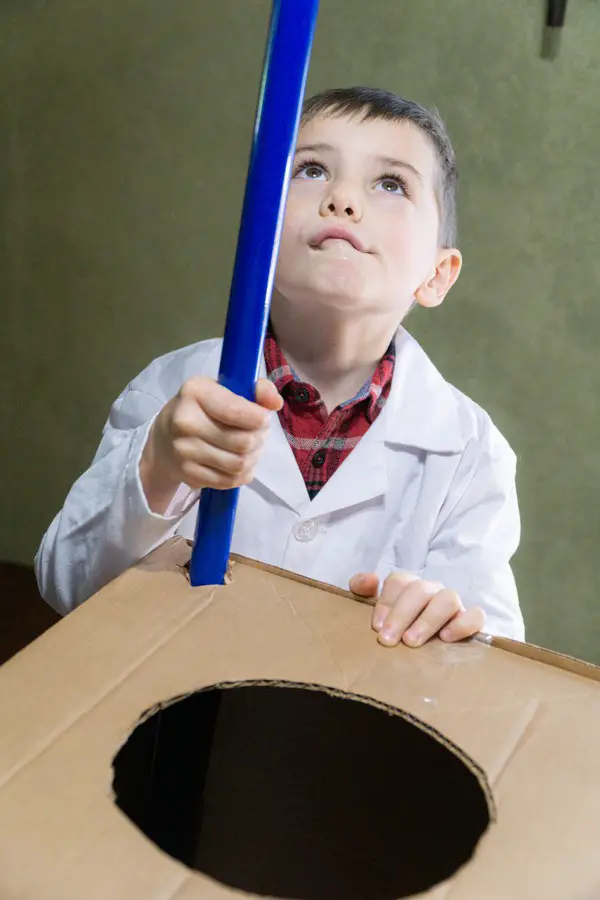
The washtub bass conjures images of old time jug bands with home made instruments that people made using whatever they had on hand. Instead of putting a hole in a washtub, we’ll use a large box. The principles at work are the same as our other vibrating string experiments. You just need a large box for the resonating body, a broomstick, and a string. Check it out the big box bass and other experiments with sound.
Recycled Garden in a Glass Jar
Create your own miniature ecosystem with the “Garden in a Glass Jar” activity. This simple project allows you to craft a self-sustaining terrarium using simple materials: a glass jar, potting soil, small stones, plants or moss, and water.
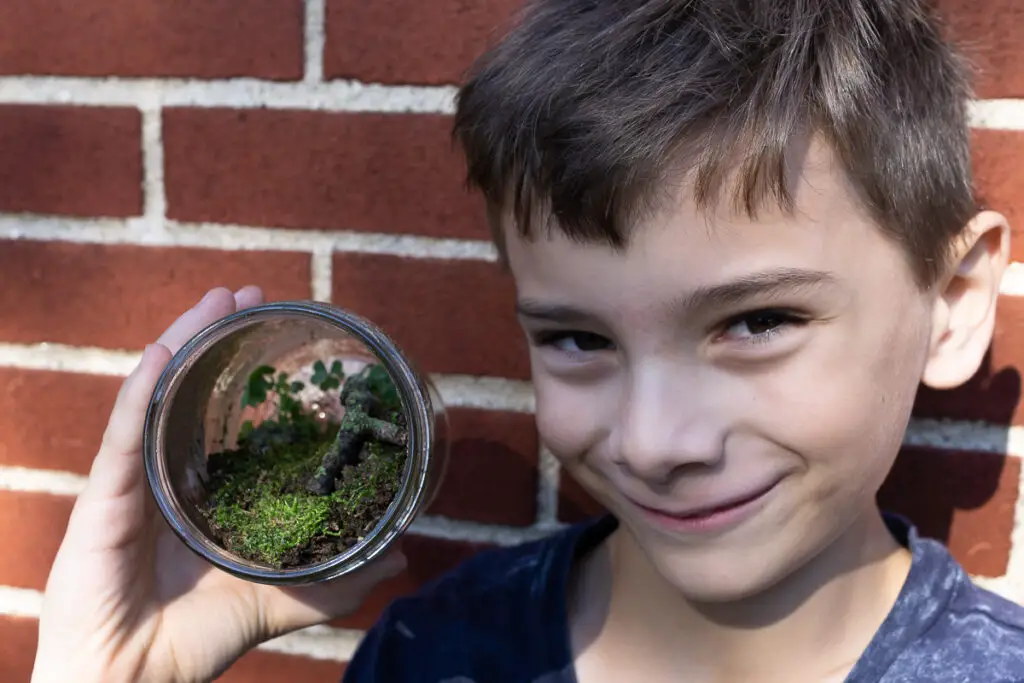
By layering stones, soil, and plants inside the jar and sealing it, you create a low-maintenance garden that thrives on recycled moisture and sunlight. Perfect for green thumbs and decor enthusiasts alike, this terrarium brings a touch of nature indoors with minimal care, offering a serene and vibrant accent to any space.
Check out more in depth direction in our post about plant activities for kids.
Popsicle Stick Activities
Popsicle sticks are another great material for STEM challenges. Popsicle sticks are easy to source, though you may need to eat a lot of popsicle sticks for large projects. You can cheat a bit and buy them in bulk if you need a bunch or are doing activities for a large group.
You can set all kinds of rules around building bridges and boats (What bridge design can hold the most weight? What boat design can hold the most coins and stay afloat? What’s the tallest tower you can build with a set number of sticks?)
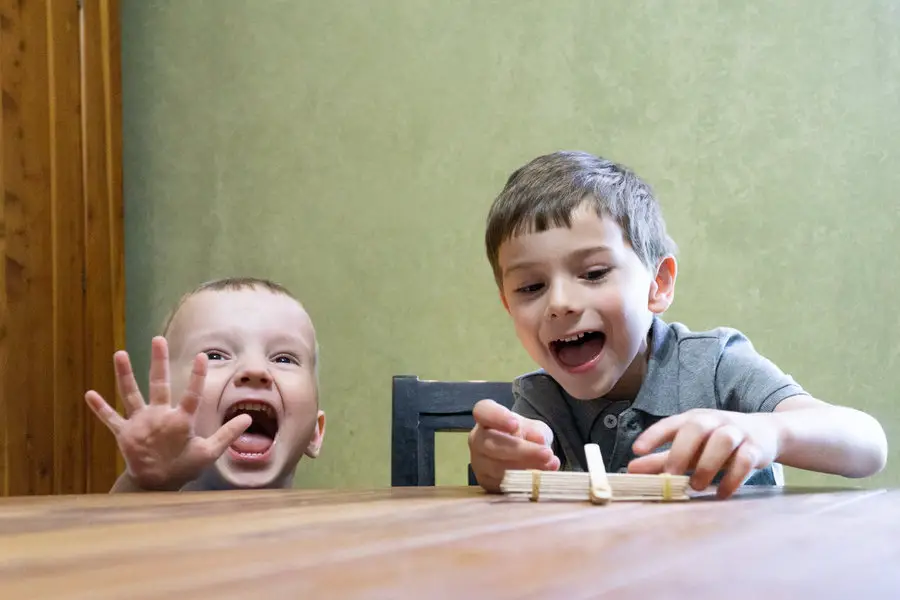
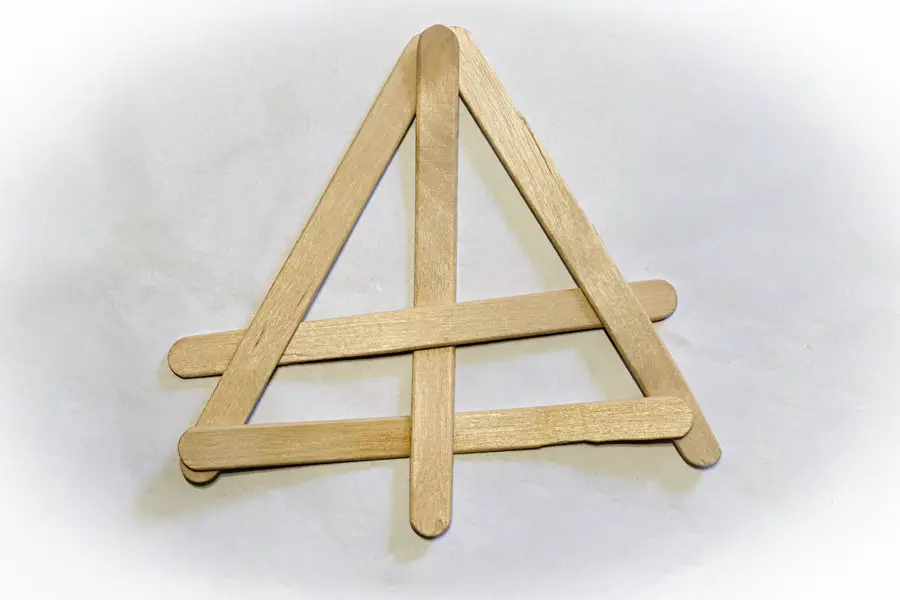
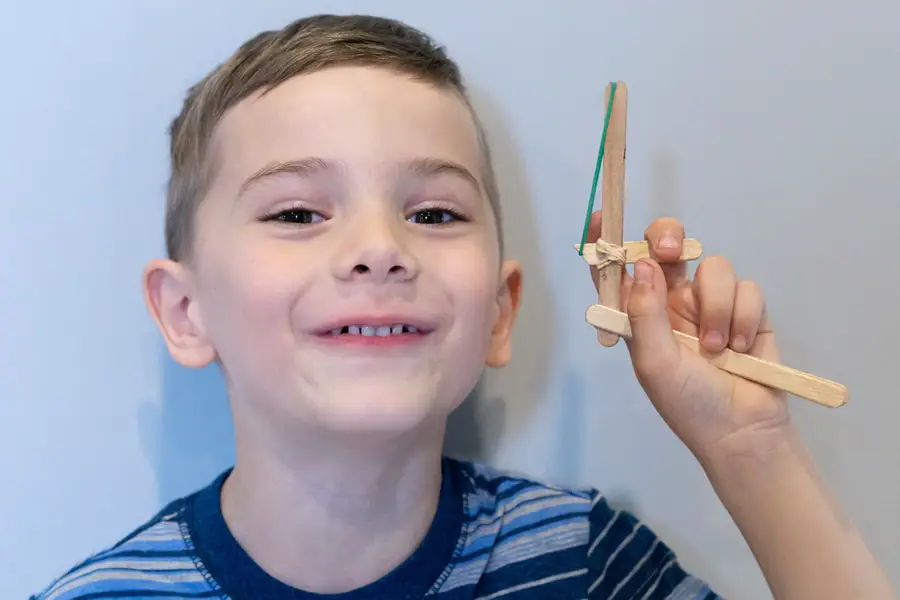
If you like the cardboard tube catapult, you’ll love the popsicle stick catapult. Again, a plastic spoon and a rubber band will be the other recycled components. You can check ours in out catapult activity.
You can make a domino like chain reaction or “bomb” by weaving popsicle sticks together under tension. Its a fun lesson in kinetic energy.
Check out these and more in our full post about popsicle stick activities.
Tin Can Projects
Tin cans can provide the raw materials for a bunch of projects. You can use them to build, make a classic can phone, make musical instruments, make homemade ice cream, and more.
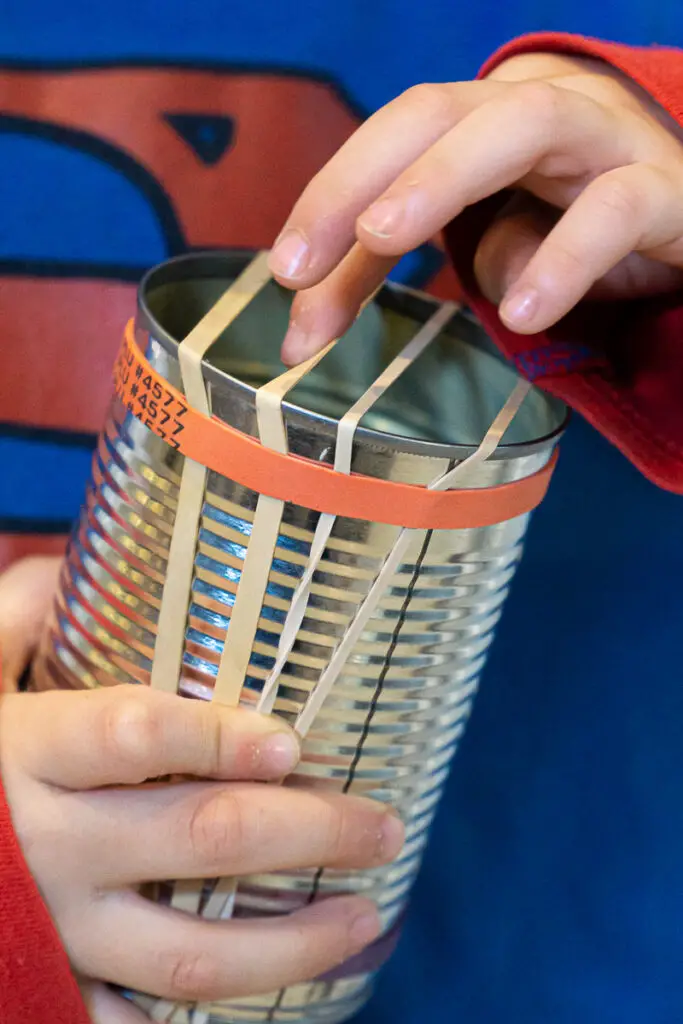
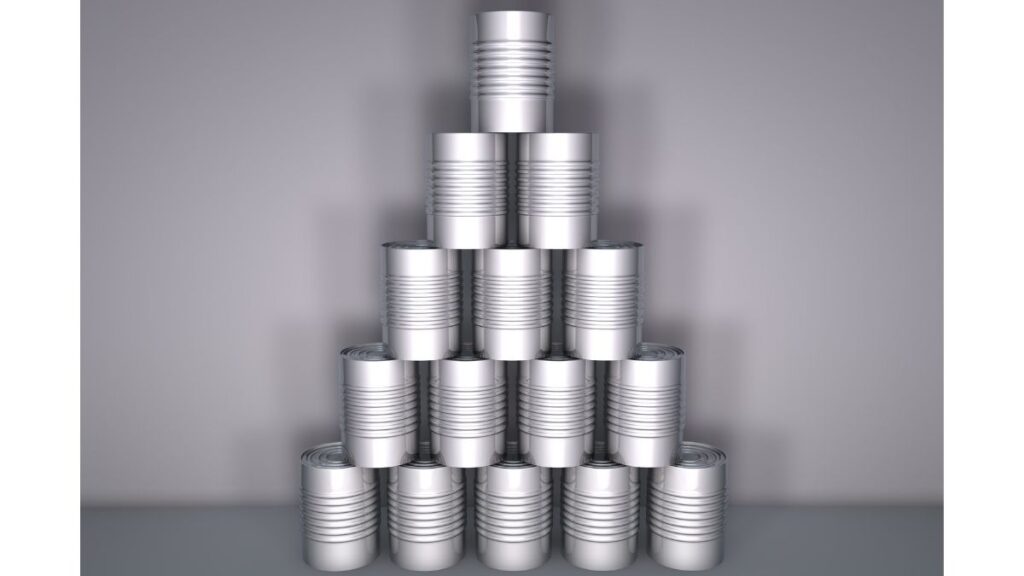
Check our full post on Tin Can STEM Activities and try upcycling some of your cans.
Creating Steam Cars
Using tin cans, rubber bands, metal boxes, candles, and straws, you can construct a micro steam car that uses a small turbine on an axle to move through boiling water and create steam. The build in the video is made completely from discarded materials.
This teaches students about some fundamentals of locomotive engineering and familiarizes them with the naturally occurring phenomenon of evaporation and other fundamentals of physics.
Steam cars have been popular in educational curricula for decades. They are a great way to teach children about one of the most important technological innovations of all time, the steam engine.
This one does need parental supervision. As you’ll see in the video, the “first draft” of the car burst into flames, and the heat source needed to be redesigned. Safety first, folks.
Egg Drop Challenge
Yes, you probably remember the egg drop challenge from your science classes because it is a popular way to teach children the fundamentals of physics. The classic egg drop challenge somehow finds its way onto any STEM challenge round up list.
The goal is to create a container that will stop an egg from breaking when it hits the ground from a high drop. It’s so versatile, in that you can use a variety of materials to cushion your egg as part of the challenge.
The great thing about the egg drop challenge is that it’s not limited to any set list of materials. This means you can change up the challenge to use only recycled materials such as egg cartons, plastic bags, toilet paper rolls, straws, and other normally discarded materials to create a structure that would cushion the eggs landing so that it doesn’t crack upon impact.
Try using any recyclables, or maybe set the parameters of the challenge to a smaller set of materials; for instance only cardboard tubes like toilet paper rolls and paper towel rolls. (You can check out our whole post on activities for kids using toilet paper tubes for more projects.)
Egg Carton Seed Starter Planters
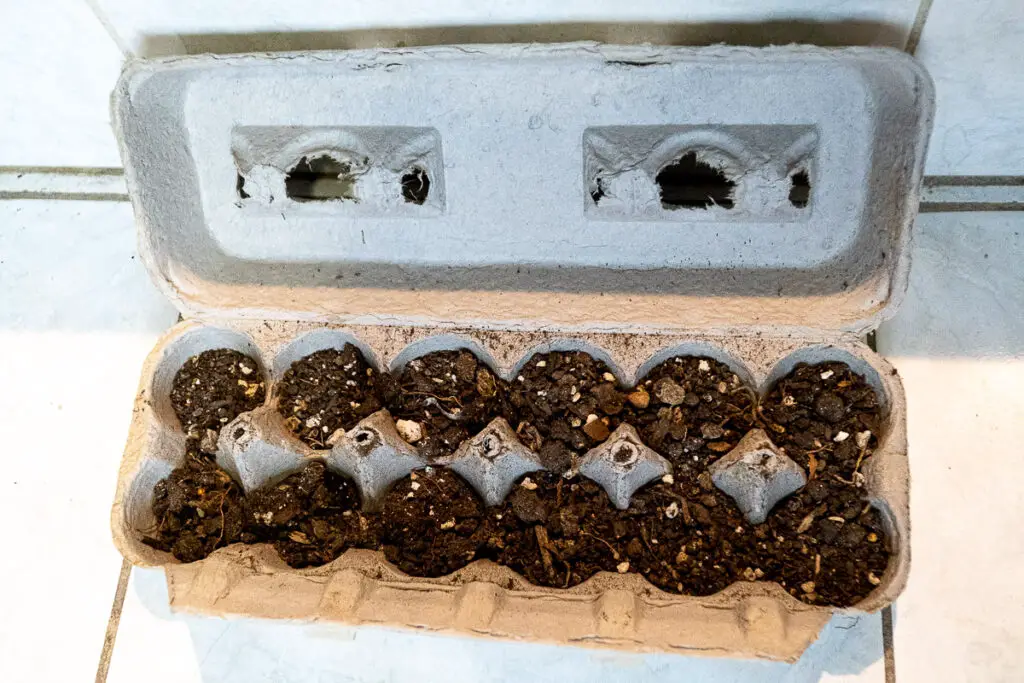
While we’re on the topic of eggs, you can use the empty egg cartons for seed starters. Just fill the empty carton with potting soil and drop your seeds in each section for a dozen plants to get a head start on your garden.
When it’s time to transplant them, you can tear apart the each compartment and plant it directly into the garden. The paper/cardboard carton will decompose and compost into the soil.
Creating Classic Toys
You can create classic toys, such as spinning tops and a paddleball with some everyday recycled items.
You can create a simple spinning top with just a round toothpick and a small cap from a milk carton. You can simply make a hole in the middle of the cap and attach the toothpick to it so that there is roughly half an inch of space between the bottom of the cap and the bottom of the toothpick.
Glue the toothpick to the cap in the desired location and make sure it’s secure. Then you can try giving it a spin. On the first try, your spinning top will not spin because balance is essential, and you will need to adjust the positioning of the cap accordingly or tweak it by using toothpicks of different lengths.
A simple alternative spinning top could use a pencil and a circle cut from cardboard.
There are countless instructional videos online that will instruct you on how to create other, more complex toys from recycled materials.
You’d be amazed at what you can find on the internet, and instructional videos on crafting toys is no exception. You’d be surprised by some of the great toys you can learn how to make through online instructional videos.
To create a paddleball, you need:
- scissors
- cardboard
- elastic bands
- a bouncy ball
- glue or tape
Start by cutting the cardboard into the shape and size that you’d like the paddle to be. Trace the paddle on another piece of cardboard and cut out a paddle identical to the first. Then, cut the elastic band or another stretchy material to about eight inches long.
Poke a hole in the center of one cardboard paddle, thread the elastic band through it, and tie a knot at the back, so it doesn’t fall out of the front end. Then use glue or tape to stick the other cardboard cutout to the back of the original, covering the string at the back.
Attach the bouncy ball to the string’s free end using different methods such as tying or gluing them together.
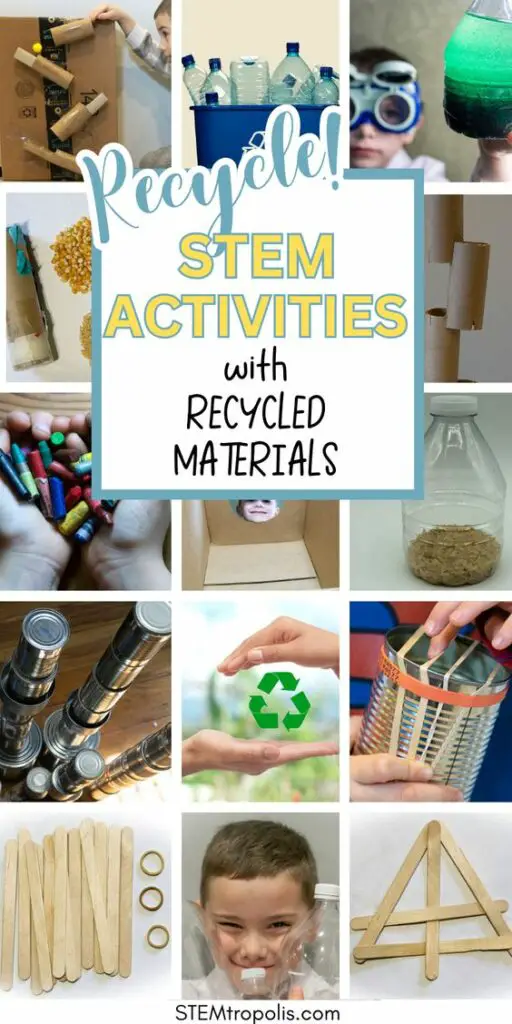
Wrap Up – STEM Projects with Recycled and Upcycled Materials
Teaching children about important scientific concepts can be quite dull. The projects that we’ve discussed are genuinely fun, and you can do them at home or in the classroom. You’ll love doing these projects and progressively learning about the theoretical concepts they need to understand through practical application.
And, by upcycling and using recycled materials, these projects will help instill a culture in future innovators that place sustainability at the top of their list of priorities.
Check out more STEM projects you can do at home or how recycled materials are an essential part of a STEM Makerspace

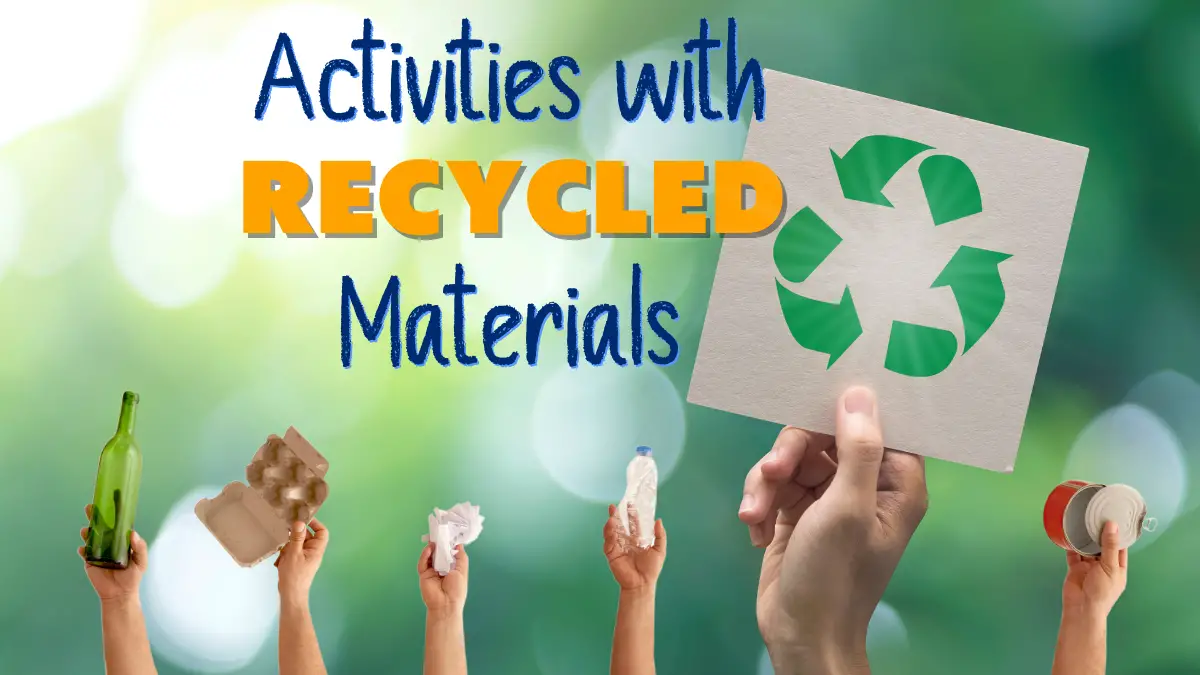

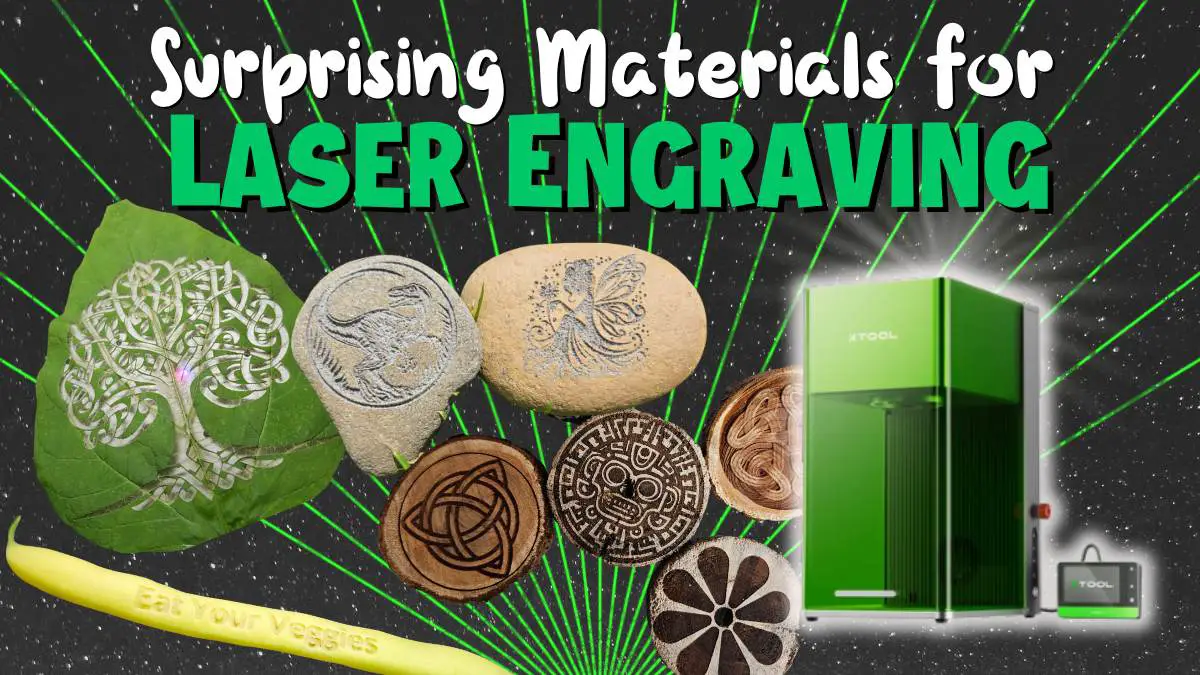
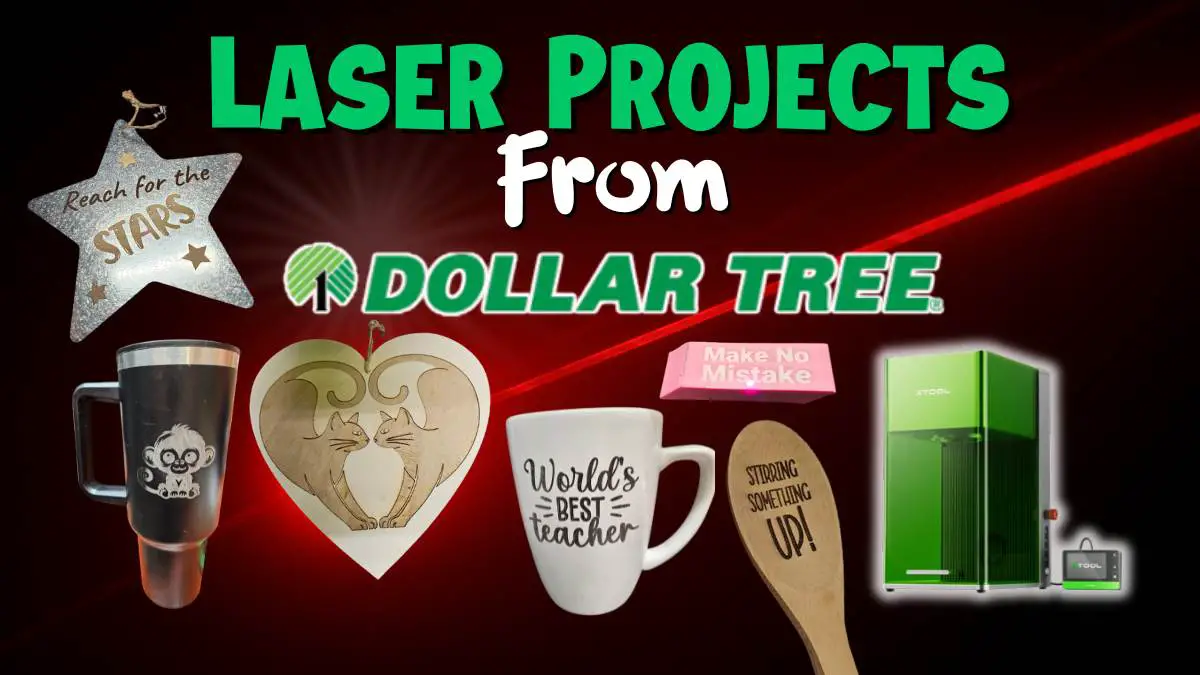
One response to “STEM Projects Using Recycled Materials”
Your content is thought-provoking.